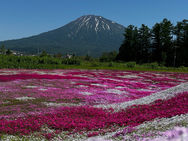

DAYS
STAY SALTY ...... means column
Sumiko Kuramitsu Column
愛しのブエノスアイレス
from Buenos Aires / Argentina

倉光寿美子
Reiki Teacher / Hypnotherapy Therapist
レイキティーチャー、ヒプノセラピーセラピスト。アルゼンチンタンゴに魅せられて、ブエノスアイレスに渡り、街と空と文化と人に恋をした。ただ今、北海道の実家に帰国中ですが、変わらずブエノスアイレスの魅力をお伝えしていきます。

12.10.2025
DAYS / Sumiko Kuramitsu Column
愛しのブエノスアイレス
ブエノスアイレスの春の芸術イベントと、「芸術の秋」したいわたし

ブエノスアイレスにいる友達からメッセンジャーに写真が送られてきました。夜の庭園で日本人女子ふたり、楽しそうに笑っている写真。
「あー、夜遊びしてる。」
ブエノスアイレスのいまは春。夜の庭園はさぞかし素敵なことでしょう。
この日は『La Noche de los Museos(ミュージアムナイト)』というブエノスアイレス市のイベントでした。夜の7時から深夜2時まで市内300箇所以上の美術館や文化施設が入場無料となり、各所でコンサートや特別なプログラムが開催されるのです。この間、公共交通機関も無料となるので、多くの人が市内を行き交います。
通常の美術館の展示品は、入場料さえ支払えば別の日でも見られます。ですからこの日に行くべきなのは、普段公開されていない場所や、このイベント限りのプログラムがある場所です。そんな掘り出し物を巡って、夜のうちに二軒、三軒ハシゴするのも楽しいものなのです。
こうした文化的なイベントがあるのが、ブエノスアイレスの愛すべき側面のひとつです。平時から美術館、博物館は概ね低価格だし、公共の音楽会、フェスティバルなども数多くあります。そしてアーティストに優しいお国柄。
ミレイ大統領になって、文化的な予算は削られ方向と聞いていましたが、このイベントは残ってよかったです。

もともと「眠らない街」の印象が強い街ですが、このイベントの夜は一層賑わいます。ニュースによると今年は史上最高120万人の人出だったとか。不況で経済的に抑圧された気分を、みんな何処かで発散したかったのかもしれません。
わたしの友達ふたりは、庭園で開催されたコンサートにお出かけした模様。
いいなー。夜の文化的なお出かけ。楽しそうで羨ましいです。
そんなことを思っていたら、わたしも「芸術の秋」を感じたくなりました。
実はずっと気になっていた展示があったのですが、開催地が少し遠くて迷っていました。しかし『La Noche de los Museos』に触発されて出かけることにしました。
北海道立函館美術館で11月末まで開催されていたのは、小松美羽さんの『祈り 宿る』という特別展でした。作者の祈りや瞑想の中に現れたビジョンを作品にしているものが多く、独特の世界観があります。作品の前に立つと、絵のスケール感や迫力、アクリル絵の具の凹凸など、作品の息遣いがリアルに感じられます。直にその場で見なくては分からない空気感、作品のエネルギーに心を奪われました。足を運んで本当に良かったです。
ロビーでは、ライブアート作品と並んで、その制作過程を動画で流していました。作者は、真っ白なキャンバスを前に正座して祈り、それから制作に取り掛かります。最後はまた祈りで終える、その姿がとても印象的でした。これはもうご神事なのです。
全作品の根底には「大調和」の理念があるそうです。そのエネルギーをたっぷりと浴びるような芸術鑑賞でした。
ブエノスアイレスに暮らす前のわたしは、芸術の楽しみ方が全然わかりませんでした。その頃、友達から教えてもらったのは、「自分のために一作品を持って帰るとしたら、どれがいいかな?」と考えながら鑑賞する方法でした。今回、一番惹きつけられたのはこの作品でした。我が家には到底入り切らないサイズですけれどもね。
もう季節は冬になりつつありますが、滑り込みで「芸術の秋」を思う存分楽しめました。

「NEXT MANDALA 〜魂の故郷」
9.10.2025
DAYS / Sumiko Kuramitsu Column
愛しのブエノスアイレス
手相占いがくれた、使命を生きるヒント

夏の始まりに、ヒーリングイベントに行ってきました。多くのセラピーサロンが集合するこの手のイベントでは、一箇所でたくさんのヒーリングメニューを、お試し価格で受ける事ができます。
わたしは、セラピストとしての研鑽にもなるので、こういう場では積極的にセッションを受けることにしています。
いくつかのブースで、介護疲れと、アルゼンチンに行きたくても行けないモヤモヤ感を吐露して、チャネリングを受けました。
セラピストが視てくれたチャネリングメッセージに耳を傾け、そのアプローチや、言葉使いなどに注目しつつ、クライアントとして、心が動いて、じわっと涙ぐんだりする場面もありました。
ただ、全体として何となくしっくりこない感覚がありました。
複数ブースで受け取ったのは、結果的にほとんど同じメッセージで、
『あなたは自分がやりたいことをするべきです。介護されている両親も、ご先祖さまも、あなたがやりたくない事を頑張ることよりも、幸せに笑っていてくれる事を望んでいます。』
というものでした。
正論すぎて、「それは、わかってるよ。それで?」という気持ちになってしまったのです。
同時に、セラピストとして、わたしも同じようなセッションをやっていることを振り返り、ザワッとしました。
わたしも自分のクライアントに、今のわたしと同様の物足りない気持ちを抱かせる可能性が、十分にありました。
いい勉強をしたと思いつつも、スッキリしない気分でいた中で、手相ブースでは、目の覚めるような経験をしました。
わたしの手相を眺めた占い師が放った言葉は「あなたは、自分が空気を読む必要がない人である。という事を分かってますか?」でした。
「嘘でしょ?」あまりにも想定外の言葉に、思わずわたしは前のめりに。
わたしの手相は、典型的な『自由奔放』な性質を表しているのだそうです。
生年月日と同様に、手相も、生まれ持ったものですから、そこには本人の才能が刻み込まれています。すなわち、生まれる前に自らが決めてきた、今生の使命の道しるべです。

わたしの手相鑑定は以下の通りでした。
『自由奔放でクリエイティブ。二番手ポジションで才能を発揮。他の人を後押して、成功に導く。言葉を使って気づきを与える。日本よりも海外で輝く。』
二番手ポジションには納得でしたが、意外に感じることも多かったのです。
だからこそ、この鑑定に、わたしは心を掴まれました。
ということは、ですよ。割と得意だと思っていた、わたしの「空気を読む力」は、これまでの人生で、努力して磨いた技能だったということです。これは素直に自分を褒めてあげることにしましょう。
さて、折角教えてもらったので、この才能をどう活かしたら良いのか考えました。
わたしがセラピストという職業を選んだのは正解みたいです。それを通じて、誰かの背中を押していくことが出来たらいいなと思います。
両親の介護をしている現在は、それに時間と労力をかけられないのが壁のように感じていました。
でも、そんな状況ならではの創造に心を向けて、楽しめたらいいのかな?と発想転換してみます。
いま、目の当たりにしている、介護のあれこれ。それらを両親がわたしに見せてくれている、と捉えるならば、すべて学びということです。わたしなりの気づきを、発信するのがいいのかもしれません。他者の意を汲まず、自由奔放に。
それが、まわりまわって誰かの役に立つのだとしたら素敵です。
考えるうちに、アルゼンチンに行く条件が整わないのは、まだやり残していることがあるせいだと気づきました。
まずは、自由奔放にクリエイティブする使命を生きることを始めよう。そう決めた、この夏の出来事です。


























